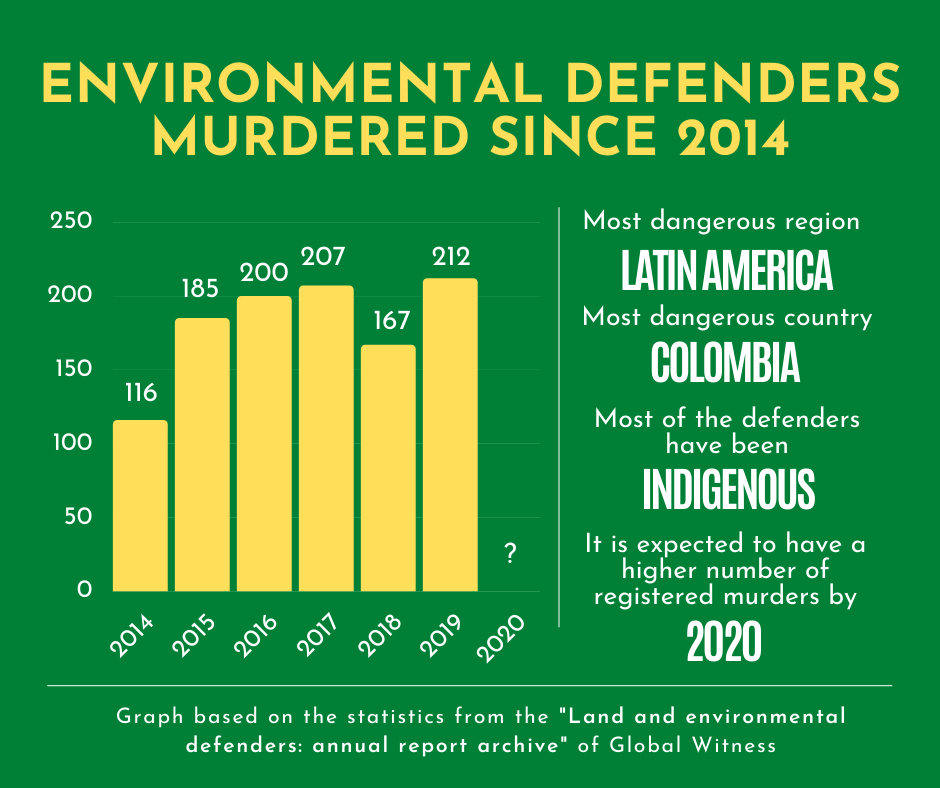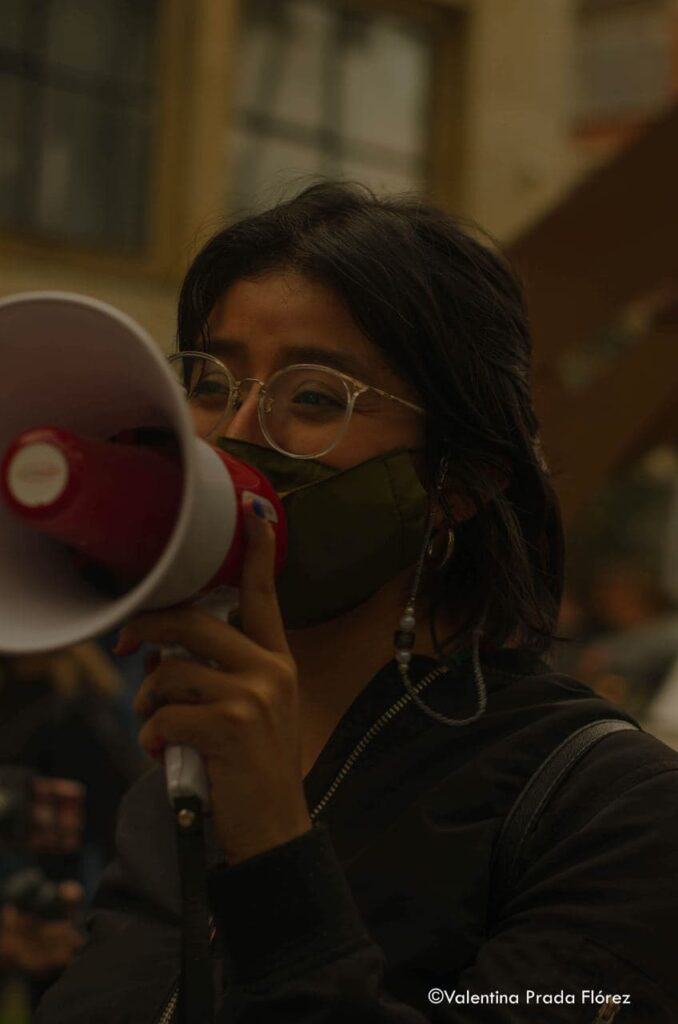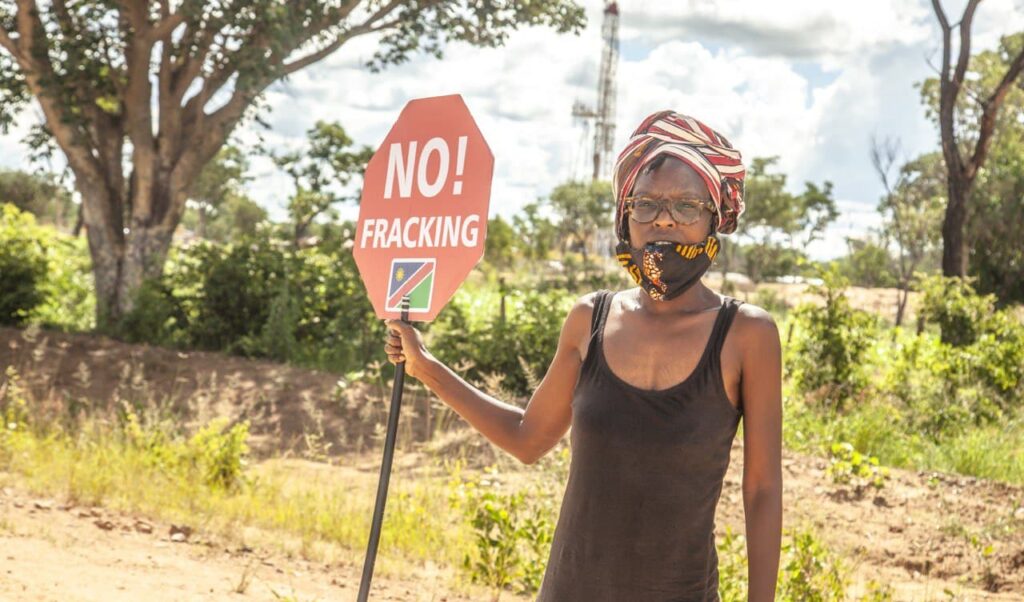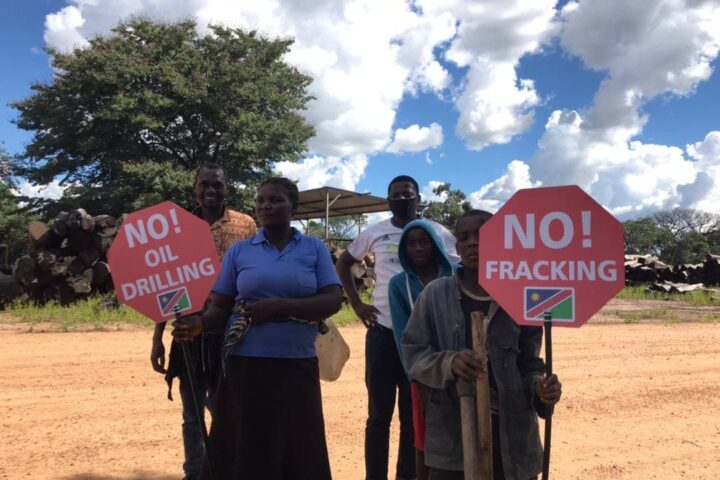Over the past few years, you might have noticed that articles and graphics about Environmental Defenders tackling local issues have become more common in the media. However, in most marginalized communities — which are mostly from the MAPA (Most Affected People and Areas) — this is not just some recent problem, but an essential part of the history of their resistance. So, who are Environmental Defenders, and what is the difference between them and environmental activists?
Environmental Defenders are at the forefront of the Climate Crisis, which means they are directly exposed to pollution, droughts, wildfires, desertification, ocean level rises and natural disasters, however caring for biodiversity and natural resources; therefore, they play a crucial role in protecting the land and the environment. Environmental Defenders are on the ground and belong to the communities that are Most Affected. For many years (a long time before we and the youth climate movement were even born), they have led the local fights against massive polluters and destroyers of the environment. As a result, they face severe threats from multiple institutions in power.
Those threats manifest in numerous ways, from physical to structural violence. On many occasions, the act of defending their territories implies direct opposition to the interests of oppressive governments and transnational companies, who try to brutally silence them. This puts their lives and safety at risk — and every year, the number of criminalized and murdered Environmental Defenders rises.


“In Colombia we hear about about murderers almost every day. 170 human rights defenders were killed last year, and we have the highest rate of killings to environmental leaders of the whole world. But we know that behind those numbers are real people who were fathers, mothers, siblings. That’s why our message is not only centered on statistics and science but also on biodiversity, ancestral wisdom that has been lost, and especially, people who put their life at risk to defend all ways of life.“
– Laura Verónica, Viernes por el Futuro Colombia
In this article we’ll present three cases to exemplify some manifestations of violence against Environmental Defenders, but know that these are only a handful of the tens of thousands of cases of harassment, arrests, and killings of Environmental Defenders that take place each year around the world.
Africa: opposition to megaprojects in Namibia
In Namibia and Botswana, the Canadian company Recon Africa has started oil and gas explorations in the Okavango Delta, which seriously threatens water sources, people’s livelihoods and local wildlife (2). In international news articles, the company claims that the exploration bases are far from the communities, but the local inhabitants have denounced drilling activities that are being carried out literally in their backyards (3).
Environmental Defenders from these communities face constant opposition as they try to stop these megaprojects that are destroying their homes and the environment. Many of them have lawsuits filed against them. Alongside this, they experience physical violence or even death threats. Ina-Maria Shikongo, an activist from Namibia, spoke to us about this. “When activists and defenders tackle companies, count propaganda, legal threats to individuals and the media, intimidation tactics through phone calls, and surprise visits from the police are some tactics employed by corporations and their contacts in response.”

“Until there is a global paradigm shift, we will continue to be shackled to this perspective and perceived ‘ecology’ is a luxury reserved for the wealthy as the rest of the world plays catch-up.”
– Ina-Maria Shikongo
Asia: threats to indigenous communities in Balochistan, Pakistan
In Balochistan, a region in southwest Pakistan, many Indigenous communities are severely impacted by Climate Change. “Balochistan has been one of the most deprived and affected regions when it comes to Climate Change, resulting in people losing their homes and the source of livelihoods.” said Yusuf, a climate activist from the region. “There are lots of floods every year here ,and extremely hot temperatures and droughts are displacing the indeginous communities. This has been a serious issue since people are losing their homes and the source of livelihood, we have been affected by the Crisis decades ago and are still being affected by them. This is how it feels when you live at the Frontline of the climate crisis.”
He also touched on the struggles of striking: “Striking at a public place is so difficult because you have to face the rejections of people and security forces.” Additionally, Climate Injustice also plays a huge role in Balochistan; “Balochistan is the most Vulnerable region in Pakistan because of its rich resources which are taken by others and people are suffering from their basic needs.” Yusuf also stated.

“Balochistan is more vulnerable than other regions of Pakistan because of its rich resources which are taken by others causing people to suffer from basic needs. We need to solve this problem before it’s too late.”
– Yusuf Baluch, Fridays for Furute Balochistan
Latin America: gender violence and racism in Mexico
Megaprojects are abundant in Mexico, mainly in the mining, tourism, energy, hydrocarbon and agro-industrial sectors (4). Some of the most recent cases are the Mayan Train, the Independencia Aqueduct and the Sonora Gas Pipeline, the Morelos Integral Project, the Interoceanic Corridor and the industrialization and urbanization in El Salto, Jalisco (5). As these projects are implemented, violations of the human rights of indigenous and rural communities are committed, displacing and murdering indigenous peoples and destroying nature. Women are among those most affected since gender-based violence throughout the country makes them more vulnerable, resulting in women being raped during the installations of extractivist projects and getting killed for being community leaders.
In order to understand this crisis in a better way, we spoke with Re Cabrera, a Mexican climate activist and feminist. “Mexico is the fourth most dangerous place to defend the land and one of those with the highest rate of femicides,” she said. “Indigenous women defenders of the territory have been severely affected by these circumstances.” During the last year, 18 defenders were killed in Mexico (6)— the highest number ever on record — and an average of 10 femicides are committed every day (7).

“In Mexico they kill you for being a woman, for your skin color, and for defending the land, that’s when we can notice the great problems faced by indigenous women defenders within our country.”
– Re Cabrera, Fridays for Future México
Despite the fact that their circumstances heighten the dangers they face, indigenous women have spent years defending their lands and territories with their lives.
After going over these examples, you might wonder, in what way are the invasion of local communities by transnational companies, the looting of indigenous community lands and gender violence related? The answer may not be apparent at first glance but once we understand that all societal issues, particularly those exacerbated by the Climate Crisis, are systematically connected, we can see that they are all expressions of the same structural violence that permeates our societies. At the end of the day, all of these problems stem from the same root causes: neo-colonialism, extractivism, racism, imperialism and patriarchy. That’s why we need to build alliances between different social fights, because essentially and actively we’re all fighting for a system change.
So, what can you do?
- Recognize that in the fight for Climate Justice, different Defenders face different challenges.
- Inform yourself about the different types of violence that Environmental Defenders and climate activists face.
- Support local and international campaigns that highlight Social Justice for local communities.
- Support Environmental Defenders’ demands. Visit our “Ready to take action?” section to find some.
- If you are from a Global North country, protest against the companies in your region that have businesses in MAPA countries and therefore promote the oppression of local communities.
- Require your representatives to take into consideration the impact of their decisions on MAPA communities in other parts of the world.
Environmental defenders bear the brunt of the Climate Crisis and pay the heavy price of it. We must remind the world that they have been unheard but not voiceless, therefore we must honor their strength and keep the message alive from those who have died defending our mother Earth. We must stand with them and fight with them. We must not let anyone be a prisoner of injustice.

